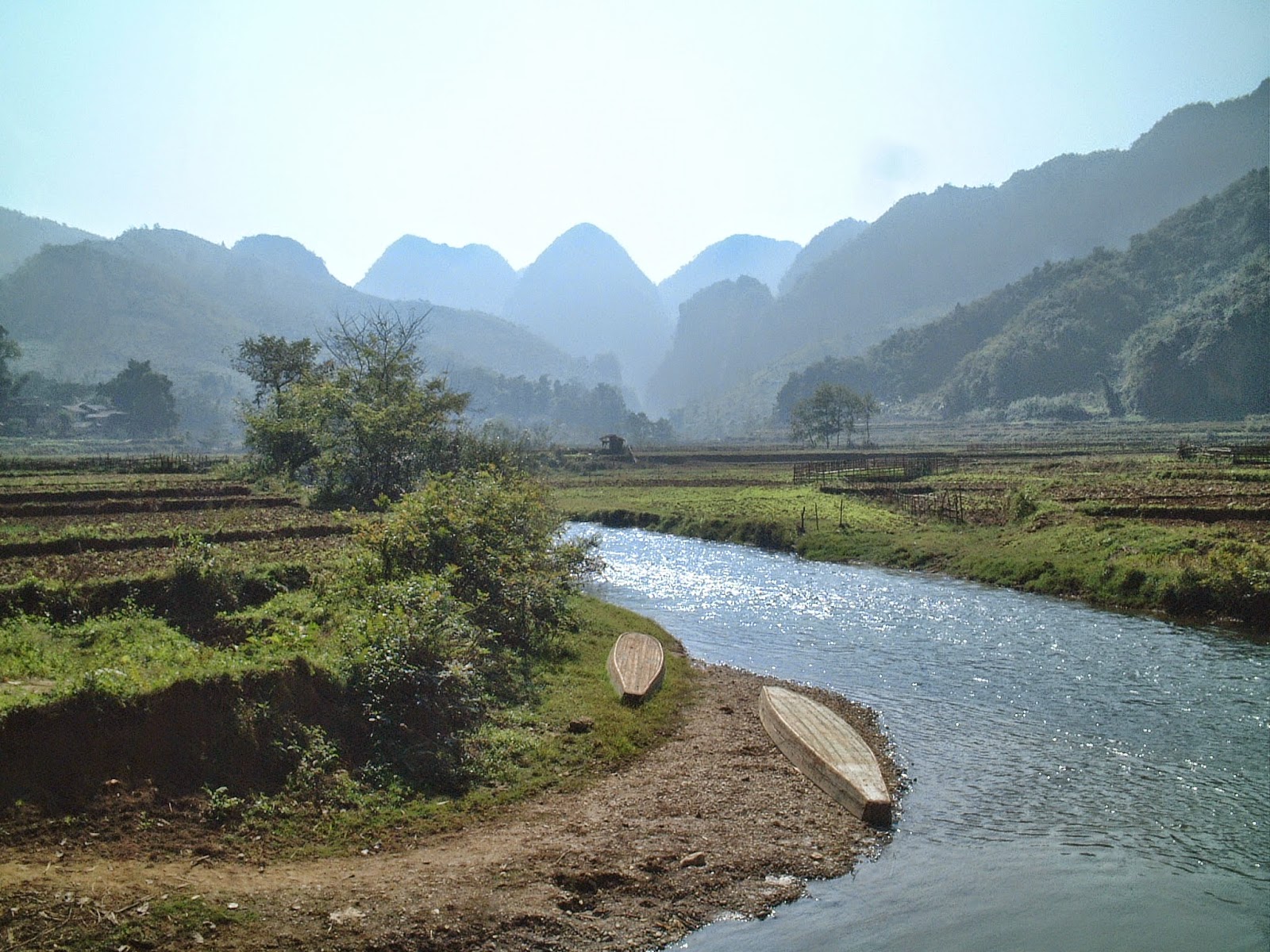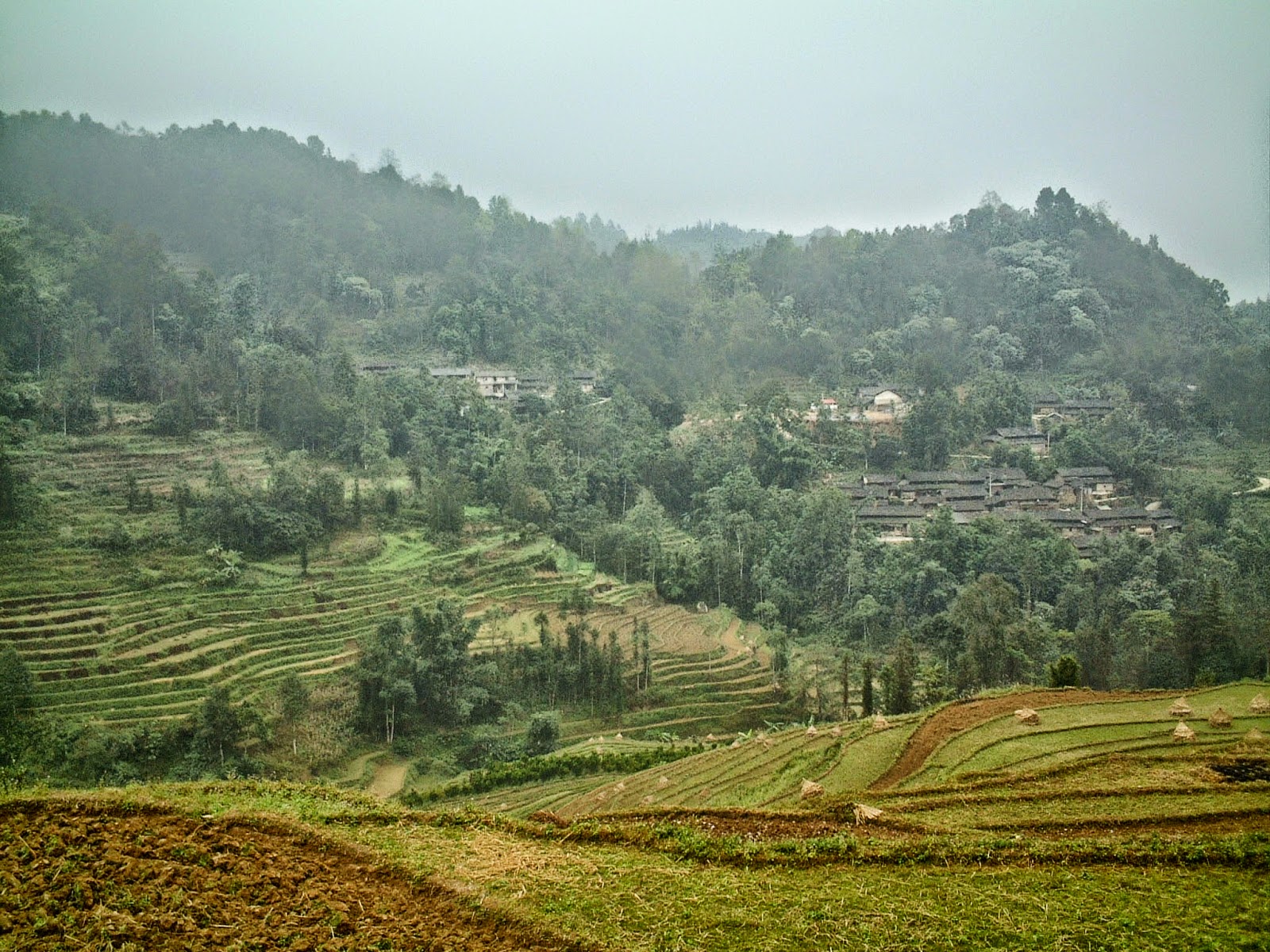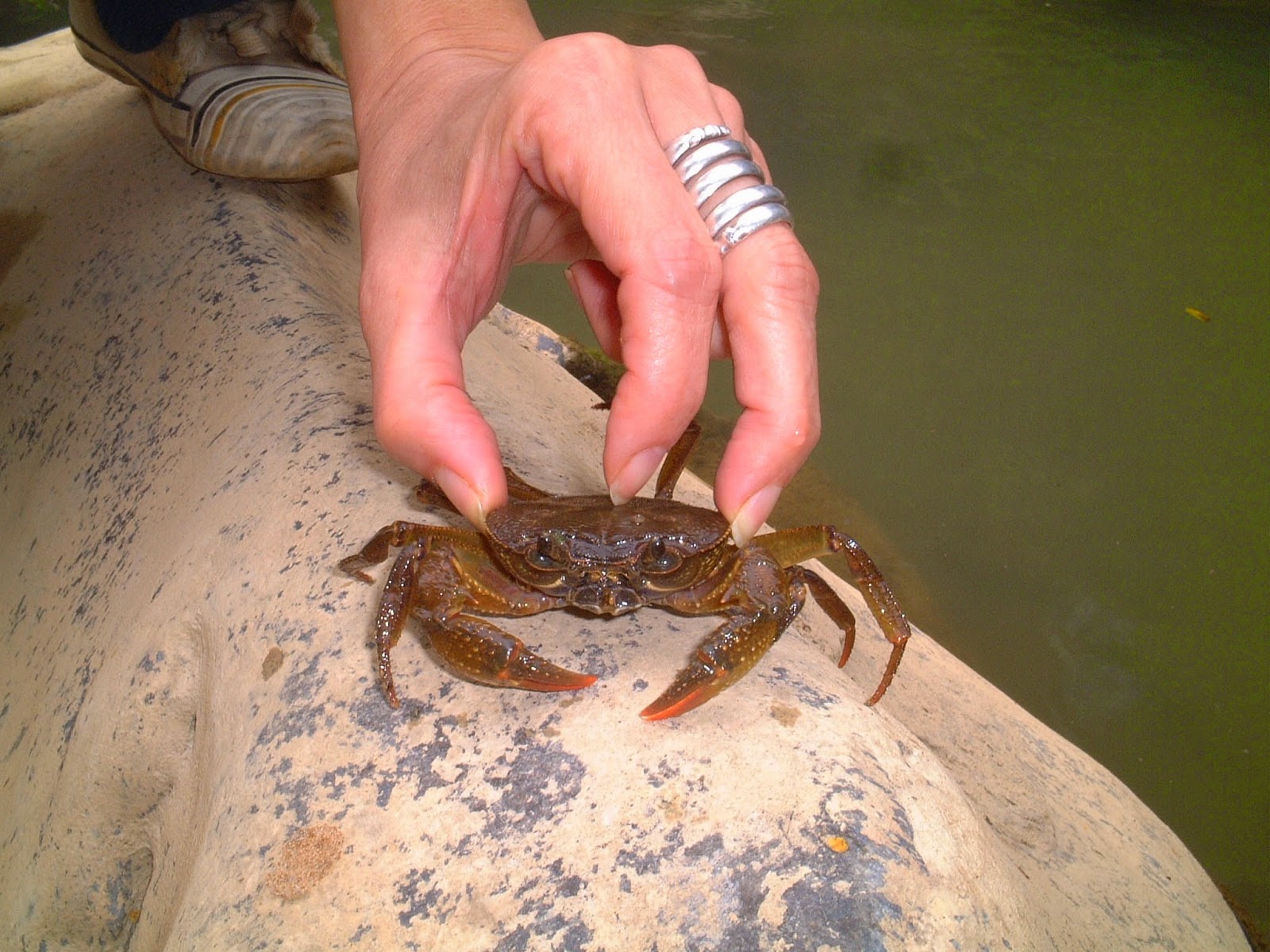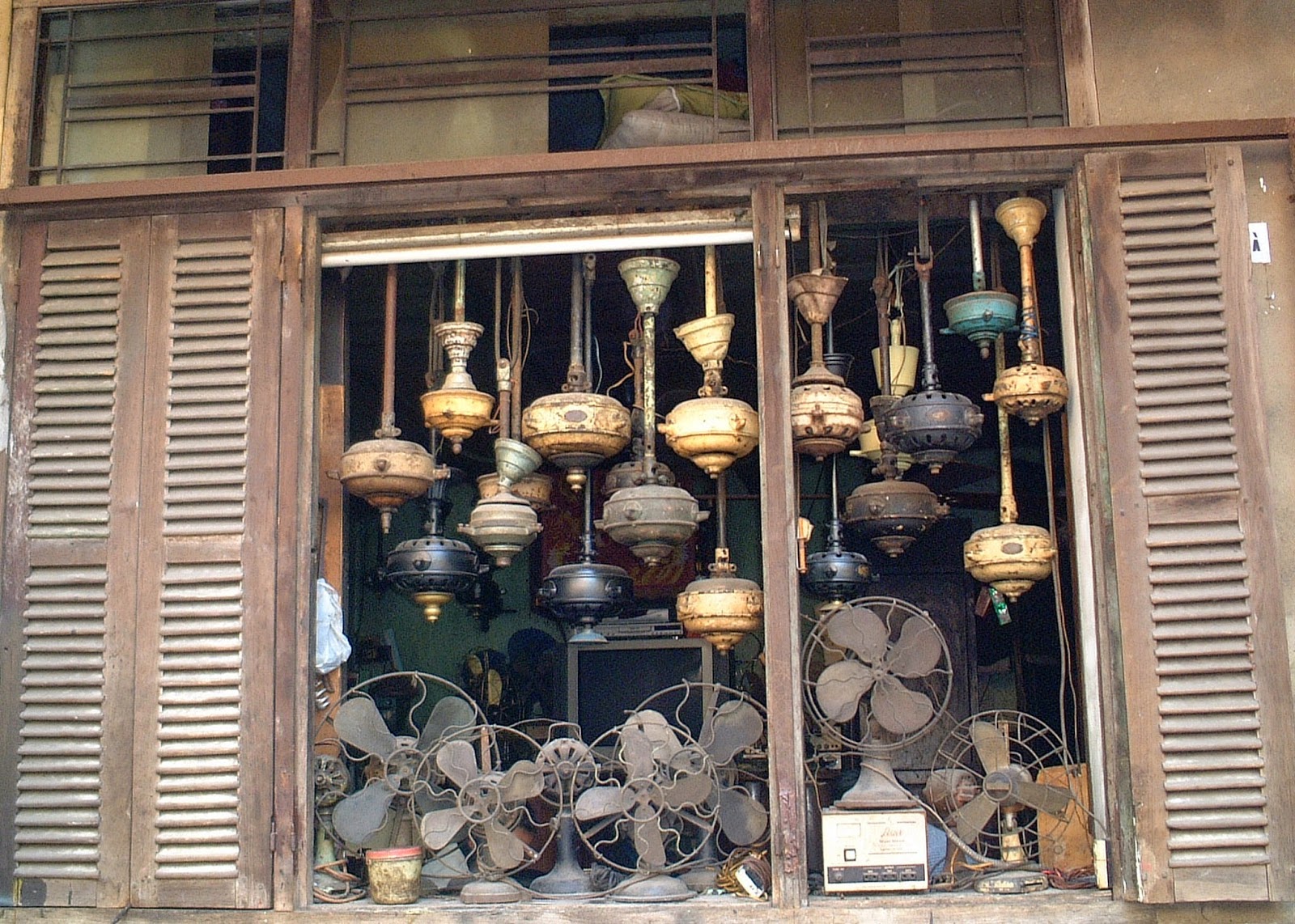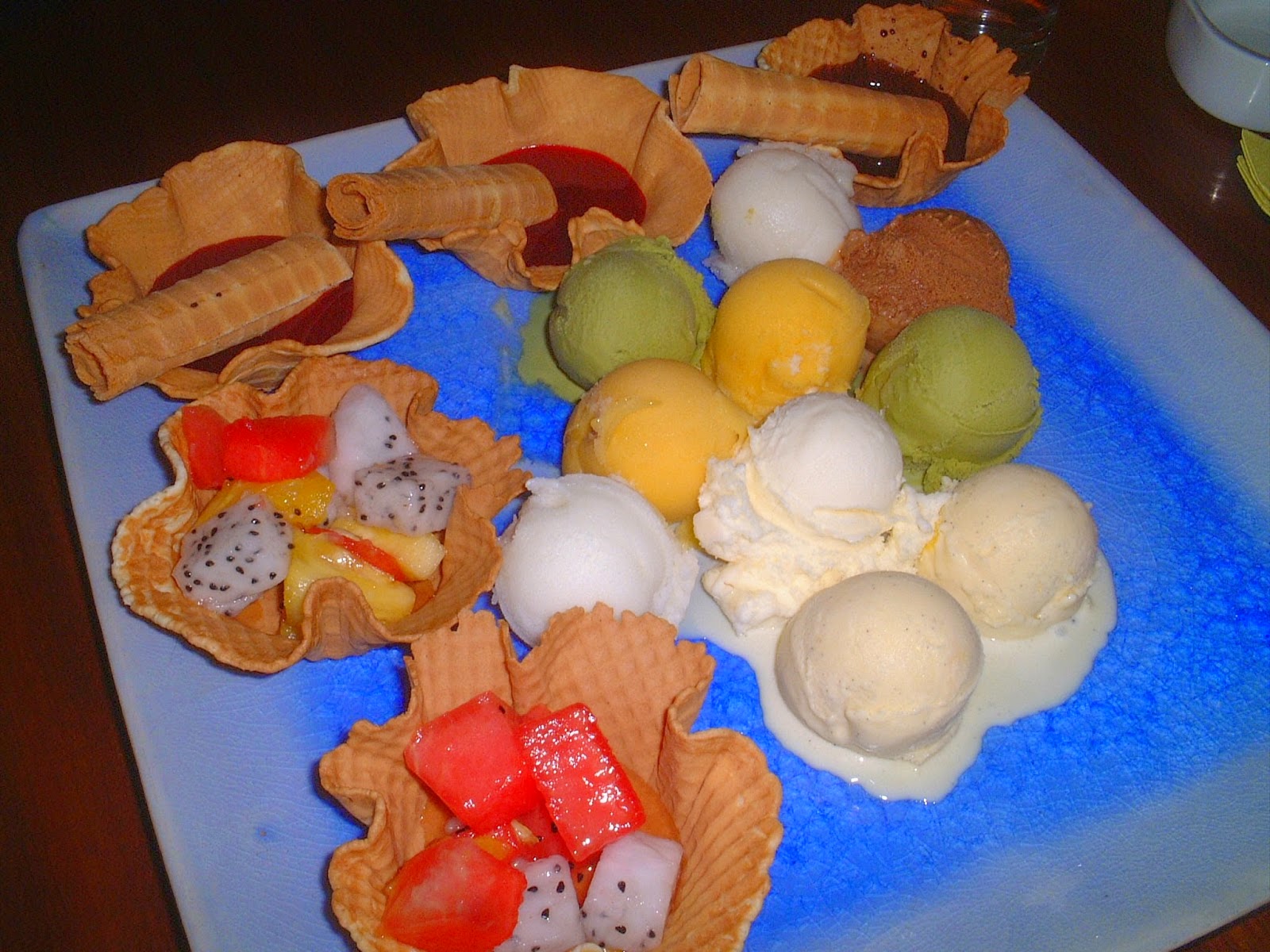In November, we travelled to North Vietnam to Sapa Town in the Hoang Lien Son mountain range and through the cross border town of Lao Cai in northern Vietnam to Hekou in South Yunnan; journeying beneath the surface to have a glimpse of the colourful ethnic groups and their culture in the border regions of northern Vietnam and southern Yunnan.
Sapa Town
Sapa is a picturesque town (1500m) located in the Hoang Lian Son mountain range and home to diverse groups of ethnic minorities living in and around the mountain region. The majority is the H'mong, Dao, Tay and Giay ethnic groups.
Our unpredictable adventure started when we arrived in Hanoi. We walked into a local hotel to check on availability of train tickets to Sapa town. To our dismay, all sleeper train tickets to Lao Cai had sold out! I put on a face like a wet weekend and, eventually got us on the night train!! We paid USD25 each, slept in the awfully cramped staff cabin quarters in one of the train carriages. We had a private escort who took us to their staff cabin. The staff whispered, "Psst, lay low and be invisible" Invisible we did! Slept like a log right through until the staff entered their cabin, woke us up after all the passengers had alighted. It was about 5:00am. We got into the first minivan within sight (50,000VND each); check in at the Bamboo Sapa Hotel (240,000VND) at about 7:30am and headed for Sapa market!
This is the most bustling, chaotic, crowded place to be! The indoor covered market, the outdoor covered market and the retailed shops nearby. There is one section selling fresh meat. The hill tribe minority groups gather here once a week to do trading, such as wicker baskets, ethnic brocade styled clothing, hats and other accessories.
I got distracted by the group of ethnic women standing by the street selling homemade cone-shaped sticky rice wrapped in banana leaves. They tasted so fragrantly delicious!
I got distracted by the group of ethnic women standing by the street selling homemade cone-shaped sticky rice wrapped in banana leaves. They tasted so fragrantly delicious!
The ethnic brocade costumes
The women folks of the different ethnic groups adorned themselves with rich colours, unique brocade clothing, headdresses and large round earrings.
The women folks of the different ethnic groups adorned themselves with rich colours, unique brocade clothing, headdresses and large round earrings.
A vendor cleaning fresh fish in a small alleyway
This section of the covered market sells livestock and fresh meat
We joined the ethnic women folks at the long table, savouring the tasty eats and enjoying a slice of their culture...
Mainly pork and chicken meat were displayed on the long table along with a good spread of refreshing greens and soya food. The free-range blanched chicken meat tasted tender with a firm texture. Incredibly flavourful!
An interesting spread of delicious braised whole chicken, fresh rice noodles, deep-fried tofu, fresh greens and a good variety of condiments to spice up your taste buds!
The spread also included uncooked pork meat
The young hill tribe minorities trading wicker baskets
The ethnic groups gathered around the Town Square trading handicraft products.
Catching up with one another
A chilly, cloudy and foggy mountain landscape
A fantastic trip to do in November with less crowd. The weather was mostly foggy in the early morning and cool at night.
We met a local ethnic guide in Sapa town who spent the day with us, sharing interesting tales of the folk customs of the hill tribe people. She recommended the less touristy trekking routes if we were to return on our next visit.
Getting there
Overnight train from Hanoi to Lao Cai -- our 'special' class sleeper train tickets from Hoa Linh hotel, Hanoi included taxi transfer to the train station and, private escort to the staff cabin at USD25 each.
Overnight train from Lao Cai to Hanoi -- the soft sleeper train tickets (Livitrans, lower berth) from Dinh at Lao Cai was at USD30 each. He personally escorted us to our train cabin.
In Sapa town, it helps to have a local guide to take you trekking and pay them directly. Bring your own food if you are not an adventurous foodie person. Basic village home stays at 25000VND per night.
(November 2007)
Lao Cai-Hekou border crossing
We breezed through immigration and customs. Our driver, Zhang had been waiting to pick us up at the gate. This leg of our overland journey took us to Jinping, Kaiyuan, Guangnan, and Wenshan.
My curiosity was to visit a lesser known isolated ethnic village, in Guangnan.
Jinping
According to Zhang, there are gold deposits in the mountain region. Hence, the name, 'Jin' (gold); mined and managed by the government private sector.
We drove along scenic sub-tropical forests of lush vegetation and rice terraces. This region enjoy cool weather, usually foggy in the early morning and at night.
Bananas Galore!
We spotted this production line of twenty young Dai ethnic group at work. The production line consisted of the harvesting, the cutting, the washing and cleaning, the wrapping and packing into carton boxes. Finally loading them into the back of the truck. The Dai men did the intensive, labourious work under the sub-tropical heat.
I, an incidental helper, joined them in the production line to experience the local working culture!
I, an incidental helper, joined them in the production line to experience the local working culture!
Tai Yuan Resort
We met Xiao Wang of the Dai ethnic group. She works at the hotel and gladly joined us when Zhang asked if she would show us around. She took us to a local resort, 'Tai Yuan', where she spent a brief weekend vacation about two years ago. Unfortunately, we saw a neglected resort that was once popular with the locals.
The resort, located in an area of scenic beauty, has a river running around it, surrounded by virgin forest with beautiful mountains in the distance.
This resort has forty over chalets, a dining area, a basketball court. Each chalet was built using pine wood, with interesting ethnic architectural structure and design to provide maximum ventilation.
Back on the road to Mengla Hot Spring
Mengla Hot Springs
Mengla is famous for its hot springs with natural minerals. The Dai ethnic group enjoy taking baths in the common pool. While the adults bathe in their undergarments, the kids enjoy taking baths in the raw!
Zhang took us to a rustic hot spring resort that also provides several private open-air hot spring pools for guests. We enjoyed a relaxing bath in a spacious private open-air bath pool (50 Yuan).
Zhang brought us to the source of the hot spring, located in a virgin forest
The next morning, he took us to a totally isolated spot that looked like a halfway house along the mountain road, with magnificent view of the rice terraces and the river. He recommended that we try the Yao herbal bath; a popular stopover for truck drivers, managed by the ethnic Yao physician. We paid 20 Yuan each for the herbal bath. Later, the Yao physician invited us to try her homemade insect infused wine! Although her place did not have the five star spa bath environment, her special traditional herbal bath treatment using firewood, the wine and the warm hospitality of our Yao physician made it all more than just star class -- it was the most unique once-in-a-lifetime experience!
Scenic views of rice terraces and landscapes
Ethnic Market
A bustling and colourful market scene of the diverse ethnic groups of Yao, Hani, Yi and Miao in their traditional costumes -- they come here once a week to trade fresh local produce and other products.
Free-range chicken eggs, duck eggs and goose eggs! Silkworm larvae grub (top right) -- the local delicacy!
Rich protein grubs, ginger, wild greens and and chillies
The scenic foggy drive through rice terraces and scenic mountain views...
Journeying to Bamei Village
In the ethnic Zhuang minority language, Bamei means, "cave in the forest".
This is THE place that I had wanted to visit after having heard so much about Bamei. The Zhuang people in this ancient village have been living in the most pristine environment; the most isolated village in this region -- the village with no roads!
Due to the remote location of this village, their ancestors had for generations led a simple and self-sufficient life; living off the land, the river and the mountains around them.
It was a long journey from Kaiyuan; a day on the road with stops for lunch and breaks. We arrived in Guangnan town and stayed the night. A very quiet town; a stopover for local travellers.
The next morning, we travelled to Bamei Village. Dong zong had his three jolly musketeers to accompany him so they could play card games while in the village; a favourite pastime of Yunnan folks.
Zhang had to ask for directions to the village and finally located the spot. There was a quiet, well paved road leading into the village. We had the option to walk or take a horse carriage ride. Dong zong took us on the horse carriage ride. At the end of the horse carriage ride, there was the river -- the only access in and out of the village...
The boatman guided us to his boat; rowed leisurely along the river, slowly entering the cave. There was absolute silence except for the sound of the paddling oars, dripping and rippling of water and total pitch darkness through the karst tunnel cave. It felt like being in the adventure movie, "Indiana Jones"!
Oddly shaped karst formation soaring almost over twenty metres high
A beautiful stream of light at its farther end and some bamboo trees came into view
The hidden, raw gem...
We walked along the only pathway; with village dwellings on the left side and the river to the right with farmlands by the riverbank.
A serene paradise surrounded by mountains and lush vegetation
Women folks washing soya bean by the river, to make traditional tofu. According to this group of Zhuang ladies, it was only recently that they depended on electricity supply. They do not have cars or find the need to use bicycles in the village.
The process of making traditional soya bean tofu may be time consuming but nothing like having the good fortune to enjoy freshly made tofu!
A woman folk washing by the river while the children bathe, swim and play freely in the raw, in the river -- their natural bath pool!
The crystal clear water felt amazingly warm even in November
The process of making traditional soya bean tofu may be time consuming but nothing like having the good fortune to enjoy freshly made tofu!
Life of the children here is one of absolute freedom and happiness!!
Nothing like skinny dipping, frolicking in the natural bath in the shallow, lukewarm water in November!
The ancient and largest tree in the village
Numerous water wheels of different sizes seen along the river banks
Sweet tasty fresh fish from the river -- simply grilled and brushed lightly with grounded chilli peppers!
We stayed at Nong's family house. The Nongs recently completed adding the few guests rooms on the second storey of their home; using all natural pine wood. He rents out the basic rooms to local visitors usually during the weekends and holidays. They also put in a proper common toilet annexed to the main dwelling. There is no shower room. Everyone in the village bathe in the river. The river makes a Y-shaped split into two -- the 'his bathe on the left side and "hers" on the right. The kids? Anywhere at anytime!
The village folks do not close or lock their doors to their homes at all. We followed their culture, slept with our doors opened during the night. The refreshing scent of the pine wood permeates the night air that felt so relaxed, to enjoy a restful night!
There was absolute darkness. We heard sounds of something slapping on the surface of the water. We then saw the beautiful silhouettes, illuminated by the light from the oil lamp on each of the fisherman's boat; using an oar, slapping on the surface of the water to drive the fish into the nets. The traditional method of sustainable fishing carried on until today.
The beautiful view from the Nong's dwelling balcony
A rustic, sumptuous meal, using free-range chicken and fresh produce from their land, prepared by the Nong family for our Dong zong, his jolly three musketeers and us. They cooked the free-range chicken, duck and goose eggs we bought at the ethnic local market. Absolutely delectable!
The Nong family of three generations having dinner together -- their grandma, the parents and the children.
I have had the good fortune to be invited into their home, sharing meals, listening to stories and folk custom of the Zhuang people.
Unlike many ethnic minority groups that I have had the privilege to share a slice of their culture during my many journeys, this is one village that everyone works from sunrise to sundown. The children are amazingly independent; helping out on the farms or at home after school. At night, the kids would sleep with their grandma in a different room. Such is the unique culture of Bamei.
Zhuang Wedding
I have had the added good fortune to witness an authentic Zhuang wedding! The whole village was invited! It was not just a family affair; the extended families and friends, all happily gave a helping hand.
The young bride; a very shy 19-year-old, allowed us to have a peek and take picture of her and her lovely pink bridal room!
The major part of the wedding preparation is the wedding feast that would typically last throughout the day.
All of the food prepared, except for the salt, were from their own land
The wedding banquet -- the children sat together at a table
The wedding banquet -- the adult at the another table
Grandma washing sweet potatoes by the river. I have had fun joining her with the washing task and chatting about the Zhuang folk customs.
The only pathway (left) that led into the village. Over the hills, there are tea plantations. During spring season, the entire village would enjoy an explosive colour of light pink when the peach blossoms are in full bloom; transforming this haven into "The Peach Blossom Valley" (世外桃源).
At the exit point -- an unpaved pathway where waiting horse carriages would take visitors out to the main road.
Indeed, I had the good fortune to have had experience this pristine 'cave forest' haven -- living with the Nong family, attended a wedding feast and exploring the village freely on our own. Most of all, having the privilege to know the honest and simple, warm and hospitable Zhuang people and, sharing stories of their lives and culture.
As I looked back with lingering thoughts while on the bus journey to Guangnan town, having concerns on how modernization and tourism would impact this pristine village and the Zhuang people when all the highways have been linked, making it more accessible...
Dong zong did not stay in the village with us. The Yunnan city men all left to stay in the hotel in Guangnan town. He did not understand why I had wanted to stay in an undeveloped village without the modern amenities. Perhaps so, from the view point of the average city folks in one of the most rapidly fast changing countries in the world.
Wenshan
Wenshan is located in the southeast of Yunnan province. It is also known as, "The Valley of Eternal Spring" as it is situated on a low altitude plateau; enjoying average temperate climate without extreme cold or searing heat. This region is home to eleven diverse ethnic minorities.
This land is so fertile that it produces some of the finest baked tobacco, capsicum, aniseed, Cuoguo and tea. However, the most valuable is the root of the medical plant, "Sanchi Ginseng" (San Qi).
We saw numerous San Qi farms along the mountain roads. Finally, we arrived in the city and visited the largest wholesale centre of the San Qi trading market.
We saw numerous San Qi farms along the mountain roads. Finally, we arrived in the city and visited the largest wholesale centre of the San Qi trading market.
The roots of the San Qi were sorted out manually according to sizes
The wholesale centre
Since ancient times, San Qi is known to have amazing health properties at a very affordable price. It is known to help alleviate and cure specific ailments. As the demand increases over the years from home and abroad in western countries, the price has shot up considerably.
Foggy and misty landscapes...
We found a cool place to chill out; a rather steep climb down the waterfall...
Wild find! I had not expected to find fresh water crustacean. I had fun playing with them before they happily scurried back into the wild!
At Hekou, we treated Zhang to a hearty simple local meal for three of us! The dish at the centre was my choice of stir-fried huge silkworm larvae grub -- nuttily superlicious!
Hekou street scene
The final leg of our overland journey ended back at Hekou. We had to travel back to Hanoi on the overnight train from Lao Cai. Zhang saw us off at Hekou check point. He enjoyed taking us and showing the local facet of ethnic minority culture, lifestyle and food of the Dai and Yao people. At Dong zong's advice, he stayed the night at Hekou to ensure we got on the overnight train to Hanoi safely.
Sincere thanks again to Dong zong for your time with us in Guangnan and arranged to have your driver, Zhang to take us to experience your colourful Yunnan!
Hanoi
This is one city that needs no introduction. It is easy to get around if you may not know the language. Often, getting lost is part of the fun to discover rewarding moments.
Silkworms are consider a delicacy, enjoy by the locals
Hanoi Old Town -- wandering around the old quarters
After enjoying one of the best Pho Bo in a small, crowded eatery at the old quarters, the two of us treated ourselves to the largest platter of colourful delights of ice-creams (118,000VND) -- ten flavours of our choice, two portions of local fresh fruit salad and, strawberry and chocolate dips! Simply sensational!!
As we wandered through the old quarters, we chance upon a crowded eatery packed with locals, having a long queue. There was no menu but we saw the locals happily slurping away at a bowl of rice noodles in clear broth, top with sliced beef, chives and scallion. Curious, we joined the queue while observing what everyone else was ordering or eating. So, what was the secret inside the bowl?
It was hilarious because when it came to our turn, we did not know how to order! We simply pointed out at random. The interesting thing was the lady gave us thoroughly cooked beef slices instead of what most of the locals were having -- the freshly cut raw sliced beef.
What added to this amusing Pho Bo experience? We found ourselves sitting next to a guy who spoke English! He is Singaporean, working in the city. He was with his colleagues and testified that we came to the right place for the bowl of Pho Bo -- the best in this part of old quarters! Yeah!!
The thoroughly cook sliced beef Pho Bo was at 10,000VND. The raw and cooked slices at 15,000VND!
I am not a big fan of beef but the beef was so tender and, the clear broth? Amazingly tasty!
If you are in Hanoi old quarters, go to 49, Bat Dan Street! Enjoy!!
(November, 2007)
.JPG)





































.JPG)





.JPG)
.JPG)
.JPG)


.JPG)
.JPG)

.JPG)
.JPG)
.JPG)
.JPG)


.JPG)
.JPG)









